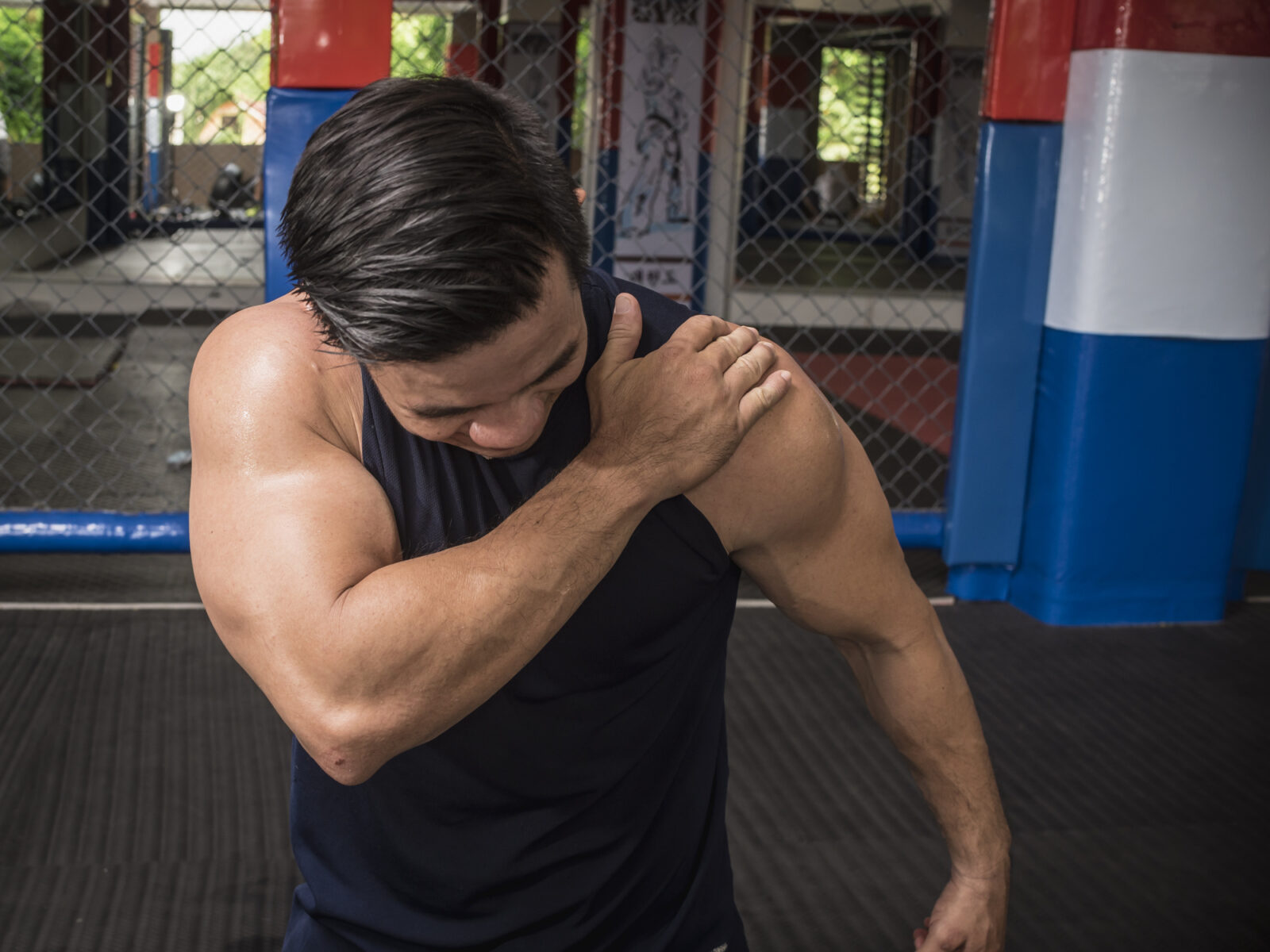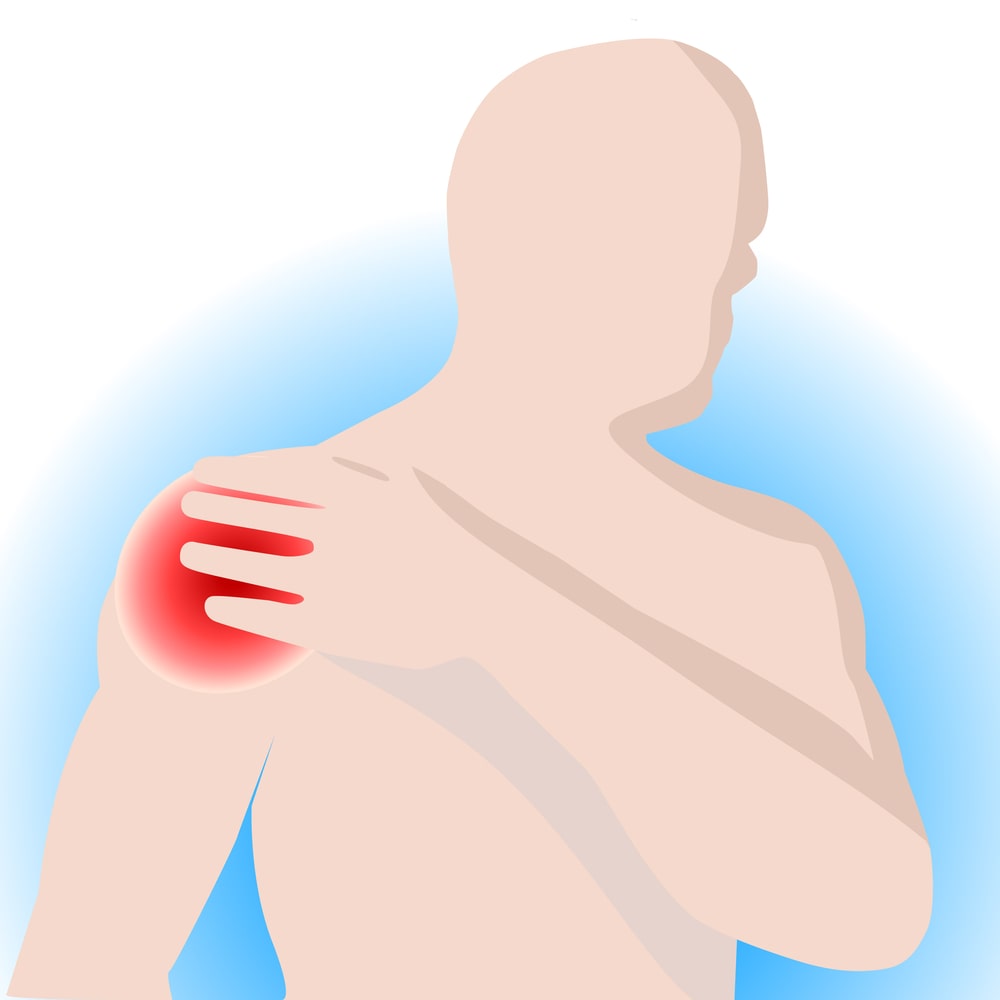Rotator Cuff Surgery Recovery Timeline: Here's What to Expect
Video Transcript
Postoperative Expectations
So, you’ve had rotator cuff surgery. This is what to expect post-operatively.
After rotator cuff surgeries, or most rotator cuff surgeries, we’ll have you in a sling. And I have my patients wear a sling pretty much for the whole time from surgery to 6 weeks posttop. And in that period of time, they are allowed to move the elbow out of the sling and take it off for showers.
Pendulum Exercises
And usually most patients I’ll have them do some pendulum exercises where they lean forward. It kind of gravity then takes the arm forward a little bit. They can do a little bit of motion but that’s just about it. I don’t want any kind of force actually on the repair.
So that allows some early motion but very very limited. It’s really about rest at that point. The construct that we use even though it’s anchors in the bone that that are attached to sutures that hold the tendon down onto the bone that’s strong but not strong enough and we can very easily overcome that if we start elevating our arms. So those are the early instructions.
Therapy
Now at 6 weeks post-operatively, you have some very early healing that allows us to start the therapy at that point. So I usually get you in with a good therapist who can carry out our rehab protocol. And that’s going to be from 6 weeks to 12 weeks.
We’re going to have you doing active assisted range of motion where we’re going up and and trying to explore all the depths of motion, elevation, external rotation, internal rotation, and also just you know massaging the surgical scars, the portal sites that we do cuz we do this all through an arthroscopic approach.
Postop Recovery Timeline
So after that at 3 months post-op is when we start doing some of the strengthening. Very very light stuff that we start. And from about 3 months to 6 months is really where you start to see your strength start to improve and the comfort levels improve and the range of motion all the while is also improving to the point where now you’re sleeping through the night. You’re feeling better. The pain that you had prior to surgery is gone.
You have some improving postoperative pain. And I always tell my patients that have to go through these operations and they’re very happy at the end of the course, but that ultimately the majority of the result like your final final result will be after 1 year.
So, you know, it’s an investment in your time to get past something that just isn’t getting better through other means like therapy, PRP, shockwave, maybe even a cortisone injection.
So, that’s the general idea. It is obviously a big deal to go through surgery, but it’s worth it if your problems are such that they’re disrupting your life.
At Modern Orthopedics, we’re here to help you live pain-free. See you in the next video.
Are you experiencing recurrent pain when performing specific activities? Perhaps you’ve muscle weakness or a limited range of motion when moving your upper arm. If that sounds familiar, then you’re probably experiencing a rotator cuff injury or problem.
There are millions of people, just like you, experiencing the same rotator cuff aches and pains each day. It can affect your job and quality of life, but luckily, treatment including rotator cuff surgery can prevent future injuries and issues.
It’s integral that you see an orthopedic surgeon as soon as possible; they’ll be able to provide the correct treatment and information regarding what you can expect post-surgery. Engaging with a sports medicine program can aid in a structured and effective recovery process.
Continue reading to learn more about rotator cuff injuries, surgeries, and recovery time:
How Rotator Cuff Injuries Happen
A rotator cuff consists of four muscles forming tendons around your shoulder joint. When rotator cuff injuries arise, it’s most likely due to tears or inflammation (tendinitis) in one or more of the tendons. The tears can be partial or complete and worsen over repeated motions.
You may irritate the torn tendons if you perform work duties that require moving your upper arm or playing sports fairly often. Rotator cuff injuries are quite common for professional athletes, especially those playing baseball, basketball, tennis, or golf.
Over time, your risk of a rotator cuff injury increases. Most tears occur in individuals older than 60 years-old and frequency of rotator cuff injuries increase with age. In some cases, an acute injury can cause a rotator cuff tear.
What Surgery Is Required for a Torn Rotator Cuff
Most patients suffering from a rotator cuff injury can receive inpatient or outpatient surgeries. Inpatient surgery requires you to stay in a hospital bed, while outpatient surgery means you can go home the same day as the procedure. The state of your injury and the severity of the tear can factor into whether you receive inpatient or outpatient surgery.
However, not all rotator cuff injuries require a surgical procedure. In some cases, your doctor may prescribe conservative treatments at first, such as resting and icing the affected arm or physical therapy to strengthen your injured tendons.
Some physical therapy exercises can help regain strength and range of motion in the affected area. Your doctor may even prescribe anti-inflammatories to reduce swelling or inject cortisone into your injured shoulder.
If the injury or pain is severe, and conservative treatment isn’t working, your doctor may suggest rotator cuff surgery to alleviate the pain and fix the torn tendon.
How Rotator Cuff Surgery Is Performed?
Rotator cuff surgeries are usually performed arthroscopically, meaning an orthopedic surgeon inserts an endoscope through a small incision to examine or treat a damaged joint. The point of entry is typically the glenohumeral joint (the ball-and-socket portion of your shoulder joint). From within the joint, your surgeon can assess the health of the joint and the biceps and rotator cuff tendons.
The scope is then placed in the subacromial space (underneath the acromion, a bony spot at the top of the shoulder blades or scapula) where the rotator cuff tendons pass. Your surgeon may perform a subacromial decompression to open up the subacromial space, remove bone spurs and other irregularities under the acromion, and decrease further irritation or tearing.
Then, the torn or damaged tendon is reattached to the bone using sutures or suture anchors. The surgical wounds are then covered with steri-strips and other bandages to keep the affected shoulder and surgical site from getting infected.
Because surgical methods, medicine, and technology have advanced over time, surgeons can perform the rotator cuff and acromioplasty procedure using a nerve block, which is regional anesthesia, and partial sedation. That means most patients are allowed to go home the same day as their surgery, depending on the severity of their rotator cuff injury.
The average rotator cuff surgery has more than a 95% success rate for smaller tears. Even a torn rotator cuff with two or more damaged tendons has a success rate of 70% or more. That’s why it’s paramount to see an orthopedic doctor sooner rather than later. Leaving an untreated rotator cuff injury can lead to massive tears and increased discomfort.
What To Expect
Surgical procedures can cause a lot of anxiety for many patients. Knowing what to expect can help minimize your concerns and provide much-needed relief.
Here’s what to expect:
- Pre-op: Before receiving surgery, your doctor will examine your shoulder and ensure you’re able to get the proper surgical procedure. They might conduct additional tests depending on your conditions and discuss possible risks associated with rotator cuff surgeries. You’ll also receive preoperative instructions that describe what to do before the procedure.
- Day of Surgery: Once the surgery day has arrived, you must avoid drinking or eating anything after midnight. Once you arrive at the hospital, you’ll change into a gown and make your way to the operating room.
Anesthesia: An anesthesiologist will administer general anesthesia that will put you to sleep during the entire surgical process. You won’t hear, see, or feel anything during this time. In some cases, you may receive a nerve block that will numb your affected shoulder. Nerve blocks can last hours after you wake up, so you won’t feel much pain for the first little while after the surgery. - Post-op: Once you wake up, you may feel groggy or nauseated from the anesthesia, but the feeling will wear off. Since most rotator cuff surgeries are provided on an outpatient level, you’ll likely be able to go home the same day as your procedure.
Potential Complications After Surgery
As with any surgery, there is the potential for complications. The complications are rare, but it doesn’t hurt to stay informed before committing to surgery.
The potential complications after rotator cuff surgery include:
- Infections: Your orthopaedic surgeon will always ensure they keep the surgical site free from infections, but bacteria may still linger regardless of the environment. The basic signs of an infection include pain, swelling, redness, and drainage from the surgical incision. While only a small percentage (1.9% at most) experience an infection, it’s important to recognize the warning signs and symptoms. Infections can get treated with antibiotics.
- Nerve Injury: There are many major nerves surrounding your shoulder joint, meaning there’s the potential for nerve injury or damage during the rotator cuff surgical procedure. The good news is that only 1-2% of patients experience nerve damage post-surgery.
- Re-tearing: While arthroscopic surgery can successfully repair a damaged or torn rotator cuff, there’s always the risk of re-tearing the injured tendon, especially with massive tears.
- Shoulder Stiffness: You may experience postoperative stiffness in your shoulder that can last anywhere from 5 weeks to a year. Stiffness will usually subside at some point, but the discomfort may cause some pain.
- No Improvement: The success rate for rotator cuff surgery is high, but that doesn’t mean it’s perfect. Some patients may experience no improvements from their injury, even after receiving surgery.
- Reactions to Anesthesia: Most patients will undergo anesthesia when receiving rotator cuff surgery. As a result, certain risks may arise, such as allergic reactions, blood clots, heart attacks, or strokes.
How Long Does It Take To Recover From Rotator Cuff Surgery?
Rotator cuff surgery recovery may differ from patient to patient, but it can take six to eight weeks for the tendon to fully heal. Once you start moving the shoulder and are working with therapy, it can take many months to get back to all activities.
The first stage of the surgery recovery timeline involves managing the pain. Your arm will be immobilized in a sling post-surgery, so you won’t be able to use it. After a few days of rest, you can return to your day-to-day activities, such as walking around or driving. Although, it’s important to note that all activities will be performed with one arm until the recovery period is over.
As you recover from rotator cuff surgery, you will work with a physical therapist on regaining strength and range of motion in your upper arm.
Once you have built up your strength, motion, and resistance, you may be able to resume specific activities, such as working out, playing sports, or returning to a labor-intensive job.
Always consult with your doctor before you decide to jump back into vigorous sports or activities. The last thing you want is to tear the tendon again or cause more injuries.
Managing Post-Operative Pain and Discomfort
The post-operative experience will differ for many patients, but the main concern is always regarding pain management. While nerve block and anesthesia can help decrease the pain during the day of your rotator cuff surgery, you still have to mend the pain when at home.
You’ll receive detailed instructions post-operation, which may include recommendations for pain treatment.
Here are some ways you can reduce the pain and stay comfortable after rotator cuff surgery:
- Medication: Your doctor will prescribe pain medication to take while in recovery. In addition, you can try over-the-counter medications to help reduce the pain. Make sure to consult your doctor before taking other pain medication, as it can impact your recovery and increase excess bleeding from the incision site.
- Icing: One of the best ways to reduce pain and swelling is to ice the affected area. Always ensure you keep the incision site dry when icing your shoulder. Wrap a thin towel around the ice pack and apply it to your shoulder in 20-minute intervals. You can rely on an ice pack, ice cubes, gel ice wraps, or cold therapy machines.
- Resting: Getting the proper amount of rest and sleep is vital during the surgery recovery timeline. Sleeping after receiving rotator cuff surgery may prove difficult, especially during the first month, which is why Modern Orthopaedics of New Jersey recommends sleeping in a reclining chair. You can also use pillows to prop yourself up in bed.
What You Should Expect at Physiotherapy
Physical therapy plays a role in reaching full recovery after rotator cuff surgery. Your physiotherapist will likely start the first session by evaluating and assessing your range of motion.
Then, you’ll move onto passive motion shoulder movements, which involves your physiotherapist slowly and carefully lifting your arm to ensure your muscles and tendons aren’t under strain.
Once you’re ready, you’ll move onto active motion, in which your physiotherapist will provide instructions on how to move your arm. Eventually, you will reach a point when you can start strengthening your shoulder with resistance exercises.
Some things to consider for your first physical therapy session include the following
- Arrive early to fill out the proper paperwork.
- Make sure you have your ID and insurance card on hand.
- Wear athletic or comfortable clothing. Choose something sleeveless, as it will be easier for your physical therapist to assess the joints and tissues surrounding your shoulder.
- Don’t be afraid to ask questions and set goals.
You can expect to spend at least a few months in rehabilitation for your upper arm. While you will spend much of your recovery time attending scheduled physiotherapy appointments, you may receive some at-home exercise instructions from your therapist.
Some stretching and exercising techniques include:
- Crossover arm stretching
- Pendulum swinging
- Passive internal/external rotation
- Table flexion
- Elbow flexion and extensions
- Scapular retraction/protraction
- Shoulder pulleys
During physical therapy, you may want to use waterproof bandages and dressings to ensure they don’t come loose or peel off your upper arm during exercises.
Preventing Future Rotator Cuff Injuries
After you’ve reached full recovery, it’s important to take extra precautions to ensure you don’t injure your rotator cuff again.
Here’s how to prevent future injuries:
- Exercise Often: It’s simple but effective. Committing to rotator cuff exercises provided during physical therapy will decrease the risk of another injury. You can also throw in other exercises to keep your body healthy, strong, and fit.
- Don’t Push Yourself Too Hard: Always be mindful of your rotator cuff injury, even after it’s been repaired. The next time you consider picking up a heavy box, lifting weights, or other strenuous activities, think about your shoulder and be as careful as possible. You can consult with your physical therapist to see if specific activities are okay for you to perform. Pushing too hard too fast can tear your repaired tendons and put you back in recovery mode again.
Conclusion
Receiving rotator cuff surgery isn’t always an easy experience for patients. That’s why you can count on our team of experienced orthopedic surgeons and doctors in Wayne, NJ to provide the treatment you need to fully recover. Contact us today to book an appointment or learn more about our treatment expertise.






